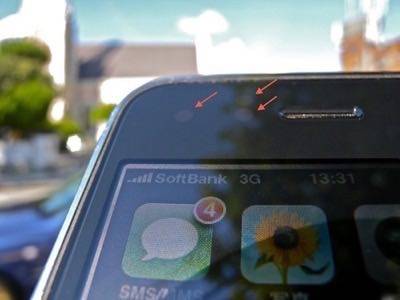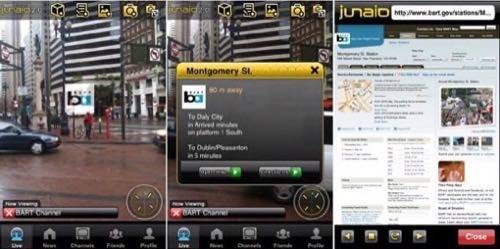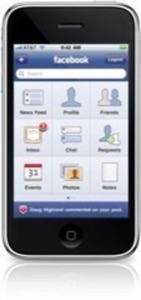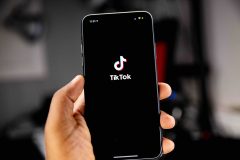In preparation for the upcoming ReadWriteWeb Mobile Summit, we’re outlining the 10 leading trends of the Mobile Web in a 3-part series of posts. In Part 1 we explored 3 important design and development issues for the Mobile Web. Now in Part 2, we look at 4 classes of mobile applications that have become popular in 2010: geo-location, Internet of Things, Augmented Reality, and mobile social networking.

We’ll explore these and other trends with you at the ReadWriteWeb Mobile Summit, a 1-day event we’re running on Friday 7 May, in Mountain View, California. That’s the day after Web 2.0 Expo (2-6 May), so we hope you’ll extend your trip to the West Coast to help us define the future of mobile! To be certain of getting a ticket, we invite you to register now.

Geo-location Services
In January, RWW Co-Editor Marshall Kirkpatrick wrote that the era of Location-as-Platform has arrived. Using leading location mobile service Foursquare as an example, Marshall wrote that “the mobile location ‘check-in’ is fast becoming the hot new status message type online.” He added that “it was only a matter of time until ‘where you are’ became a platform to build added value on top of just like ‘who you know’ has on social networking sites like Facebook.”
Top 10 Mobile Trends of 2010:
– Part 1: Design & Development
– Part 2: Apps, Apps, Apps
– Part 3: Emerging Markets
The use cases for location data include showing nearby restaurants and ratings, mobile advertising, local news, events, and Wikipedia data about local buildings. That’s impressive enough, but imagine the possibilities when you add data from sensors. As I wrote in January, one use case that should become reality soon is receiving a real-time update of traffic conditions via sensors embedded in the road.
What else can we do using location as a platform? We’ll discuss this in-depth at the ReadWriteWeb Mobile Summit.
Internet of Things
As well as sensor applications, there are other emerging applications for mobile that intersect with the Internet of Things trend. They include barcode scanning, using your phone as an RFID tag and reader, and using your phone as a proximity sensor.
As we explained in January, as well as your mobile phone reading and acting on sensor data from real world objects, the phone may also be used as a sensor itself. For example the iPhone has a built-in accelerometer, which is basically a motion detector. This is used for game control and also for re-sizing your iPhone display from portrait to landscape. The iPhone also has a microphone (which can be used as a noise sensor), a proximity sensor, and an ambient light sensor.

Barcode scanning and its applications is a fast growing market in the mobile world. The most popular form of 2D barcode is the QR Code (the QR stands for “Quick Response”), which became popular in Japan and is now gaining traction in the U.S. and other markets.
There are many emerging opportunities to utilize sensor and RFID data, which again we will explore at the Mobile Summit on 7 May.
Augmented Reality
Augmented Reality has been one of the hottest trends in mobile for about a year now. ReadWriteWeb even created an extensive report about AR and its market and development opportunities. We think that AR offers a new marketing and product paradigm for a high impact, high value customer experience. More than 1,000 AR campaigns were kicked-off last year and we expect to see many more this year. In our report, we profiled key AR development companies, their campaigns as well as development lessons learned.

In a recent post, Chris Cameron (the author of our AR report) noted that practical application is the golden ticket of Augmented Reality. As an example he pointed to the junaio iPhone application, which competes with Layar and Wikitude in the AR browser space. junaio recently announced that its formed a partnership with BART, San Francisco’s Bay Area Rapid Transit system, to bring live train data to the app. junaio takes advantage of the API provided by BART to not only place locations of nearby stations in a user’s field of vision, but also estimate arrival time of trains at each station and display that live in real-time using AR.

Mobile Social Networking
A recent study from Ruder Finn revealed that more people are using the mobile web to socialize (91%) compared to the 79% of desktop users who do the same. ReadWriteWeb’s Sarah Perez concluded that “the mobile phone is actually a better platform for social networking than the PC.”

The study found that during the 2.7 hours per day that people in the U.S. spend on the mobile web, 45% are posting comments on social networking sites, 43% are connecting with friends on social networking sites, 40% are sharing content with others and 38% are sharing photos. Sarah commented that it’s no surprise to find that the rise of the mobile phone corresponds with the rise in Facebook’s popularity, because “it has become a do-anywhere activity that captures people’s attention whenever they have free time, instead of an activity that requires people make time for it.”
Sarah concluded that mobile social networking is an easier activity to participate in now that it’s been unchained from the PC. This of course has big implications for entrepreneurs and application developers, which we will explore at the RWW Mobile Summit.
Top 10 Mobile Trends of 2010:
– Part 1: Design & Development
– Part 2: Apps, Apps, Apps
– Part 3: Emerging Markets
We’d love to discuss these and other mobile topics with you at our ReadWriteWeb Mobile Summit 2010. See our announcement post for more details.

If you’re a company in the Mobile Internet market, you may be interested in becoming a sponsor for this event. Please contact our COO Sean Ammirati for more information about sponsor packages. And a big thank-you to our current event sponsors: CallFire, WorldMate, Alcatel-Lucent and Ipevo.










